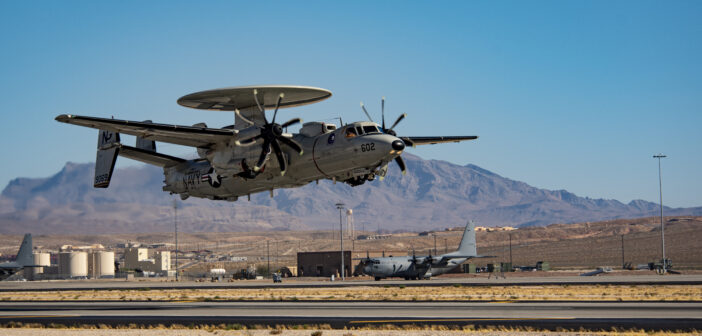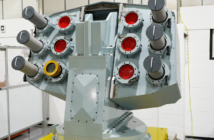By Capt. Benjamin Aronson
EGLIN AIR FORCE BASE, Fla. – For the first time, the 350th Spectrum Warfare Wing integrated with the US Air Force Weapons School (USAFWS) to provide students realistic pacing threats in the electromagnetic operational environment for their capstone exercise.
The USAFWS culminates with the Weapons School Integration (WSINT) capstone, a series of complex, large-force employment missions that serve as the capstone portion of USAFWS classes and involves the planning and execution of every aspect of air, space and cyber combat operations, with joint force components.
The focus on Electronic Warfare (EW) at WSINT aimed to increase students’ understanding when it came to EW capabilities that joint assets bring to the fight and how to integrate them.
“Our objectives for the students were to demonstrate the SWW’s capability to help them solve the complex tactical problems presented by WSINT and to facilitate a realistic EW threat environment,” said US Air Force Maj. Matthew Adams, 16th Electronic Warfare Squadron legendary bombers division assistant director of operations. “Additionally, we helped ensure that the EW effects were incorporated into mission planning, execution and the debrief process.”
Historically, the wing provided assessment of EW integration to WSINT, but this year they revamped and expanded their role and objectives.
The wing aimed to rapidly reprogramming mission data files (MDF) for priority combat platforms, acquire and analyze Crowd-Source Flight Data (CSFD), further develop electronic warfare assessment and operation experience and to test the ability to download advanced mission applications in flight.
Adams went on to explain it is crucial for future weapons officers to understand the challenges provided by our adversaries advanced threat systems and how to counter them and dominate the Electromagnetic Spectrum.
This integration provided students realistic training scenarios by emulating war reserve modes of pacing threat emitters, allowing students to find, fix, track, target, engage and assess new threats to support the warfighter and combatant commander objectives.
The focus on EW at WSINT directly supports the priorities of US Air Force Gen. Mark Kelly, Commander of Air Combat Command, amongst other senior US Air Force leaders who have stressed the critical need to incorporate EMSO into exercises so warfighters can train how they fight.
“The problem set is evolving rapidly, so the methods by which we train our future Weapons Officers must also advance or we risk our freedom to operate within and exploit adversary limitations in the EMS,” said US Air Force Col. Charles Fallon, US Air Force Weapons School commander. “We also must ensure every Weapons Officer who graduates from Weapons School is familiar with EMS considerations and how they impact their MDS or specialty as well as the entire force.”
The 350th SWW integration into WSINT 23B served as a building block for future large force exercise support so baseline aircrew, maintenance, support, and intelligence personnel across platforms and mission sets are exposed to realistic EMS challenges to better prepare to meet the pacing challenge and win.
“The EW spectrum is how we sense the enemy and environment; it is how we communicate and how we target. Ultimately, it is the method that all other domains [such as]air, land, sea, subsurface, space, cyberspace communicate and interact with each other,” said Fallon. “The luxury of operating in a permissive EMS environment is history, and we must work as a Joint Force to develop TTPs and systems that are resilient and effective in the contested environments that are the new standard assumption.”






